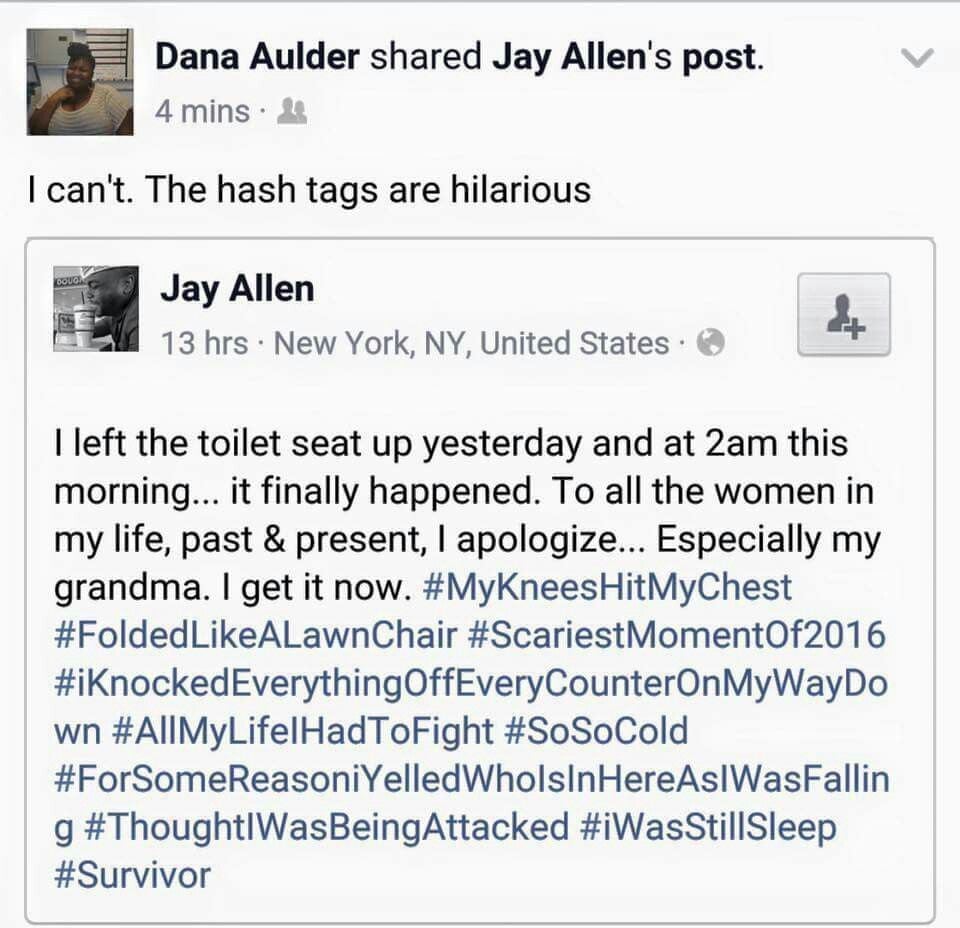this post was submitted on 25 Aug 2024
731 points (96.1% liked)
Microblog Memes
6034 readers
2171 users here now
A place to share screenshots of Microblog posts, whether from Mastodon, tumblr, ~~Twitter~~ X, KBin, Threads or elsewhere.
Created as an evolution of White People Twitter and other tweet-capture subreddits.
Rules:
- Please put at least one word relevant to the post in the post title.
- Be nice.
- No advertising, brand promotion or guerilla marketing.
- Posters are encouraged to link to the toot or tweet etc in the description of posts.
Related communities:
founded 1 year ago
MODERATORS
you are viewing a single comment's thread
view the rest of the comments
view the rest of the comments

Just close it entirely before you flush, people. The fact that there's a debate between fully open and half-open when both are inferior is baffling.
Counter point: I know plenty of people who close the lid and then flush, then leave. So when you open the toilet you're greeted by a floater or shit streaks over the bowl.
I flush with it open, check if it's clean (otherwise use the brush and flush again) then leave.
If you want to close the lid you'd have to close it, flush, open it and check, clean, close it again. Are you doing that?
Counterpoint, if you leave the lid open, you're flinging shit particles all over the bathroom, potentially onto toothbrushes.
That was tested with Mythbusters. When your toothbrush is nearby there was hardly a difference if you flush open or closed, sorry :)
‘Hardly a difference’ and ‘no difference at all’ matters when it comes to ingesting doo doo particles. I opt for the absolute least amount possible… preferably none.
Ah, it had no lid, and unfortunately that part of the end-scene is cut off on YouTube. It was this video: https://www.youtube.com/watch?v=nb-_KRh8asM
The control toothbrushes outside the bathroom had the same amount of fecal coliformes on them. That stuff is everywhere, it doesn't matter if you flush lid open or closed.
Run this quick experiment for me.
Hold your toothbrush/phone/anything on your bathroom counter above the toilet, with the lid open, then drop it. Repeat the experiment with the lid closed.
Which one offered a more preferential result?
I've never in my 33 years in life dropped something in an open toilet bowl. My toothbrush is above the sink, not the toilet. The only thing I store above the toilet is a spare roll of toilet paper.
I avoid the non-preferential result by...well...not dropping things in the toilet.
I'm in my late 30s and have literally never dropped anything in the toilet that I wasn't intending to.
Sounds like a personal issue; maybe try not to be so clumsy?
I had to present this paper for a fluid mechanics class during COVID and yes, the particles do spread. The radius of contamination was almost 1,5m.
https://www.annualreviews.org/content/journals/10.1146/annurev-fluid-060220-113712
Source?
I'm pretty sure you're misremembering that episode. It didn't involve lid closed vs open.
Ah, it had no lid, and unfortunately that part of the end-scene is cut off on YouTube. It was this video: https://www.youtube.com/watch?v=nb-_KRh8asM
The control toothbrushes outside the bathroom had the same amount of fecal coliformes on them. That stuff is everywhere, it doesn't matter if you flush lid open or closed.
Again, source?
We've established that you misremembered the lid test already, so I don't see why we should trust your memory on this.
I'm particularly skeptical of this assertion:
I'm well aware there are some fecal particles all over the place. But common sense says that aersolaized, shit-filled toilet water (which the video confirms it does spray out droplets into the immediate area) would accumulate more on toothbrushes sitting closer to the toilet than in another room.
Edit: also, were they testing by flushing just normal toilet water? Or flushing after a shit?
Because if it was just toilet water, then the test isn't even relevant to the discussion.
https://mythresults.com/hidden-nasties
I'd surely hope those tests were done with actually in-use toilets, lol. The toilet seat would be sprayed with the lid down, so it's a good indicator?
And here is the toothbrush one https://mythresults.com/episode12 (on the bottom). Maybe you can find the full TV episode, right now I can't.
Either way, as long as you don't have a vacuum toilet that sucks everything down you won't escape. I just rinse my toothbrush with water every time before I use it, which seems to be good enough so far.
Again, they weren't flushing fresh bowls of shit, just standard toilet water.
You're absolutely spraying shit all over your toothbrush for no good reason, and that's disgusting. Sorry :)
I could have sworn they tested both. I remember them concluding that lid position didn’t matter.
The toilet in the episode doesn't even have a lid.
https://youtube.com/watch?v=nb-_KRh8asM
The human memory is such a fickle thing.